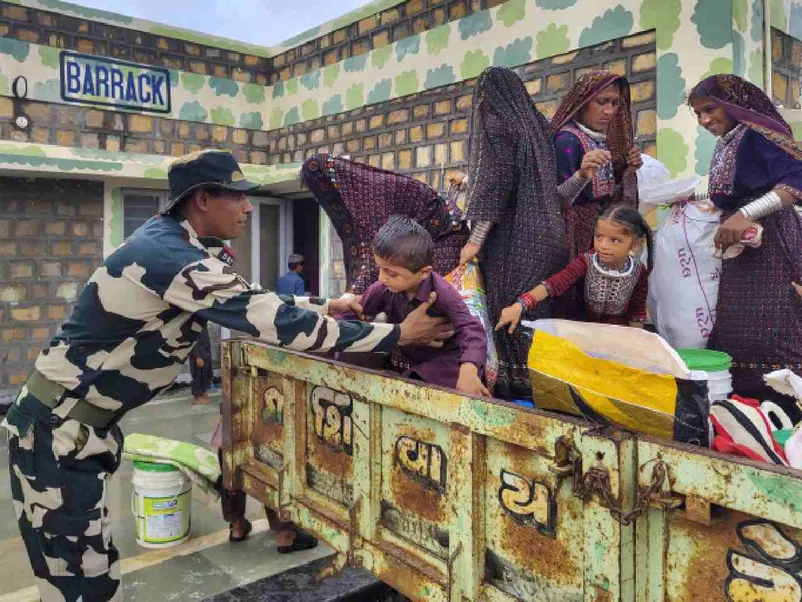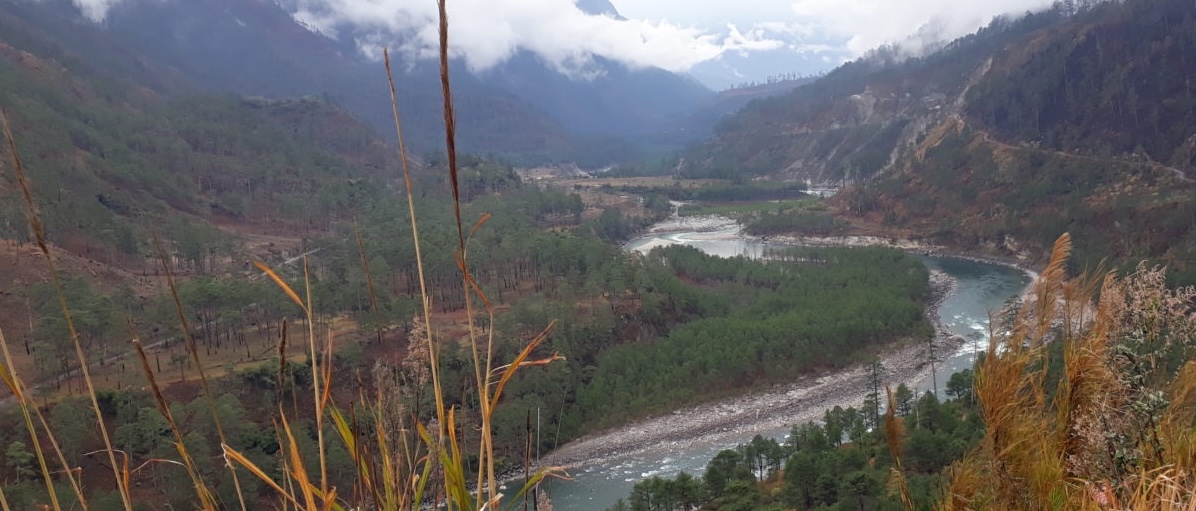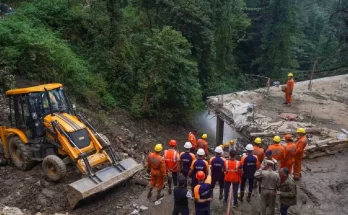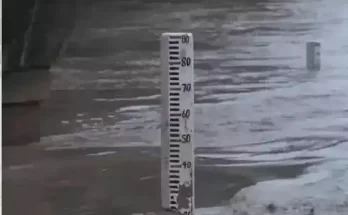1,741 coastal villages are at risk as Biparjoy is set to make landfall in Gujarat.

A BSF officer helps a child to get down from a tractor as evacuation process is underway ahead of the expected landfall of Cyclone Biparjoy at Gunau village of Kutch district on Wednesday. (Photo Credit: PTI)
With more than 1,700 coastal villages, 75 coastal towns, and 41 ports, much is at stake for Gujarat as it braces for the ‘Very Severe’ cyclonic storm Biparjoy, expected to make landfall on June 15.
Even as the state has evacuated more than 35,000 people, and alerted its hundreds and thousands of fishermen, the fact remains that about 25% of its population resides in its coastal talukas.
Two years ago, when cyclone Tauktae hit Gujarat, at least 67 people were killed and more than 8,500 cattle died.
With the threat of Biparjoy, experts have said that Gujarat can learn a few things from Odisha, which witnesses a cyclone almost every year and is much better prepared than any other coastal state of India.
The state’s Cyclone Preparedness and Response Plan 2014 provides “cyclone vulnerability and risk assessment, preparedness measures to be undertaken by each and every department of the state government, the existing system of cyclone forecasting and warning dissemination to various stakeholders and the measures to be taken by the concerned departments for emergency response”
Gujarat’s cyclone preparedness and gaps
It also mentions that the cyclone response structure will be activated on the receipt of a cyclone warning by the India Meteorological Department (IMD). Gujarat’s state-level Cyclone Management Structure starts with Chief Secretary heading the Crisis Management Group, and goes right down to the Taluka Control Room (Mamlatdar).
Comparing Odisha’s cyclone preparedness with Gujarat’s, GK Bhatt, who was part of the team that brought out Gujarat Hazard Risk and Vulnerability Atlas (HRVA), said Odisha experiences far more cyclones. “Therefore, Odisha has well-oiled machinery. Compared to that, Gujarat does not have it as smooth.”
Moreover, it is not just about good infrastructure. Gujarat Emergency Operations Centre was set up more than a decade ago. “The same needs to be upgraded in consonance with development in technologies, especially on early warning, super fast processing of information, impact analysis, dissemination and connectivity up to the last mile,” said Sanjay Srivastava of non-profit Climate Resilient Observing-Systems Promotion Council.
He further pointed out that Gujarat has more administrative staff in its disaster management chain and less of technical experts.
Odisha has almost perfected the cyclone shelters and evacuation plans for humans and livestock. For a coastline of about 470 km, it has approximately 200 multi-purpose cyclone shelters (MPCS). Its shelters are built on stilt, have place for both livestock and humans, and are equipped with food grains, potable water, and first-aid.
Compared to that, Gujarat with a 1,600 km-long coastline has 76 MPCS for its cyclone-vulnerable areas. “Cyclone shelters were built many years ago. With no frequent use, maintenance is an issue in Gujarat,” Srivastava said, adding, “The good part is that the socio-economic aspects – considered by the Human Development Index – are far better in Gujarat, and that gives them an inherent protection.”
Even when buildings are better, the livestock remains vulnerable. The reason is dilapidated gaushalas and improper domestic cow shelters. Tin sheds fly away due to strong winds as the cyclone approaches, and even old buildings can fall and kill livestock.
Cyclone-resilient infrastructure is another issue, including communications and power lines. Odisha has started putting all the power cables underground, something that the Gujarat government has not done yet.
“However, the communication system is much better in Gujarat with optical fibre cables all underground. And unlike Odisha, even if the electric poles are uprooted, Gujarat would take just two days to restore it,” Bhatt said.
Awareness and willingness of the people to cooperate in disaster management exercise is a major concern in Gujarat. “Compliance by both community and the corporates needs to be regulated by administration strictly,” Srivastava said, giving an example of how even a particular public sector company had flouted norms during Tauktae and suffered massive damage, including loss of lives.
What is at stake for Gujarat?
A taluka-level HRVA was prepared by the Gujarat State Disaster Management Authority (GSDMA) for six major hazards, including cyclones and storm surges. As many as 1,741 vulnerable coastal villages were identified when the authority had undertaken a village-level study of the areas vulnerable to cyclone.
About 10 million people (about 25% of the state population) live in coastal talukas.
The Cyclone Preparedness and Response Plan 2014 draws attention to the fact that cyclone and storm surge not only affect the economic growth of the state but also jeopardise the livelihood of coastal communities.
Gujarat’s 1,600 km coastline is highly vulnerable to cyclones and storm surge. Major and minor ports along with large and small-scale industries dot the coastline. Because of better opportunities, the towns and villages along the coast are densely populated.
As has been witnessed over the years, cyclones are never single events. Going by the IMD forecast, cyclones are always accompanied by heavy rainfall, storm surges, flooding, and in some cases, sea level rise.
A 2021 study by Council on Energy, Environment and Water (CEEW) brought out a composite index that suggested that more than 41% of districts are cyclone hotspots on the western coast of India. And Gujarat’s Jamnagar figures in the top 20 highly cyclone-exposed districts across India.
On June 14, IMD DGM Dr Mrutyunjay Mohapatra, too, mentioned Kutch, Devbhumi Dwarka, Porbandar, Jamnagar, Rajkot, Junagadh, Gir Somnath, and Morbi as the most vulnerable districts in the path of Biparjoy.
The Gujarat HRVA pointed out that about 30% of residential buildings in the region vulnerable to cyclonic wind damage can be affected due to a 100-year return period cyclone.
Another issue flagged was, “Coastal saline embankments, roads, and bridges will need to be designed with a modified set of criteria, norms, and specifications taking into account risk of fluvial and pluvial flooding induced during cyclonic events.”
(This story first appeared on news9live.com on Jun 14, 2023 and can be read here.)



